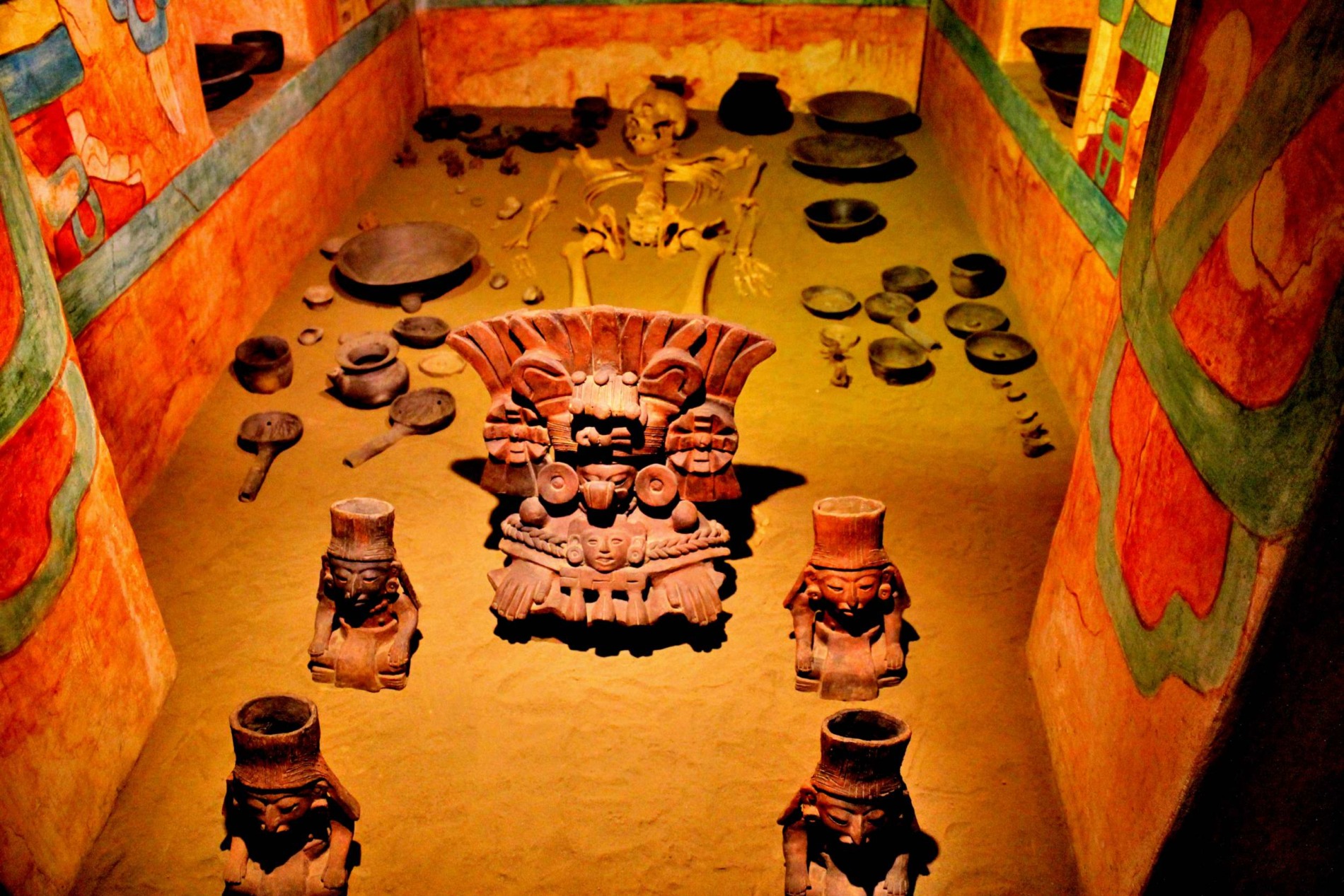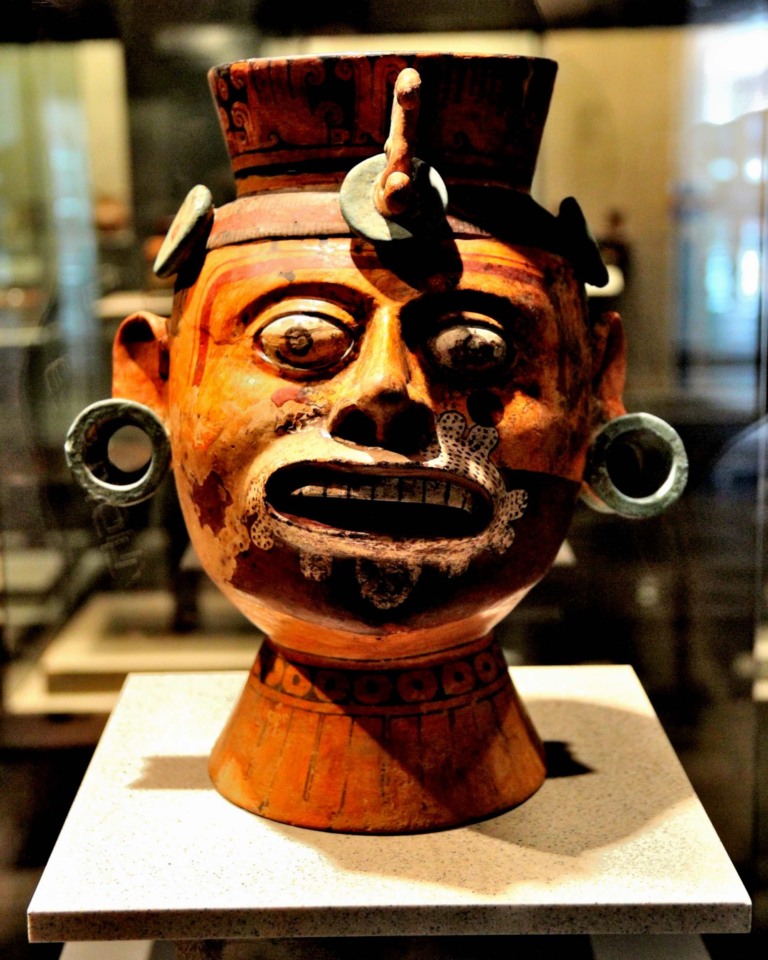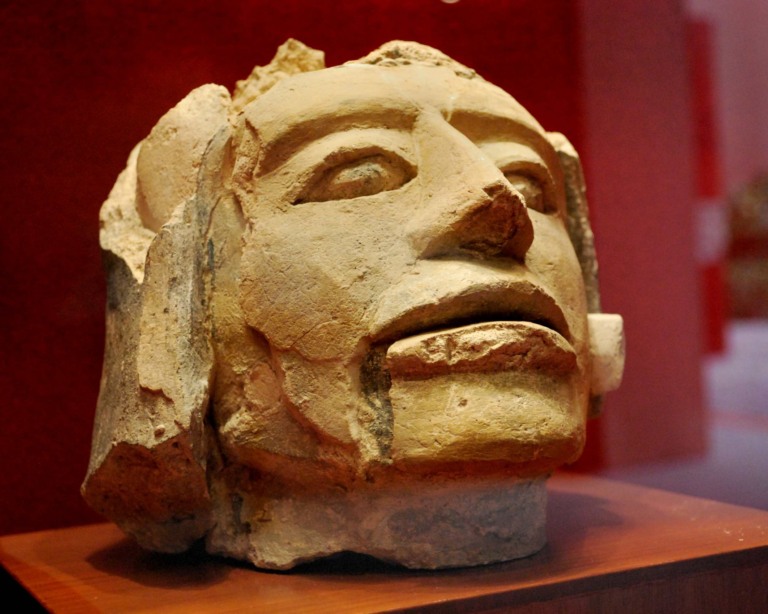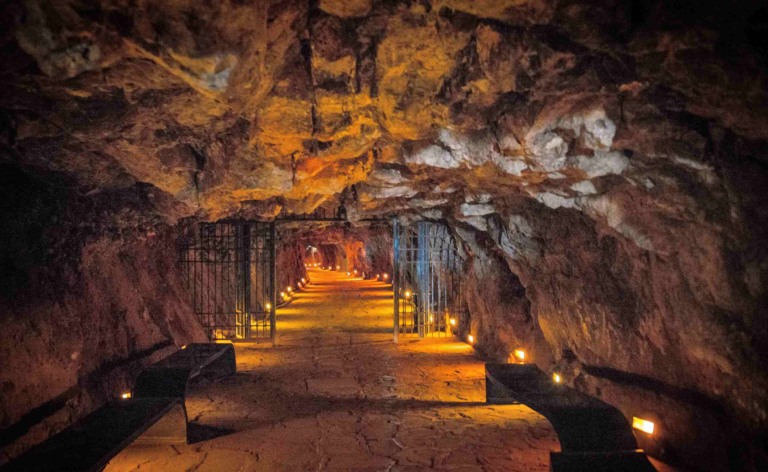On the Monte Alban tour in Mexico, the entrance fee is $70 pesos per person, which gets you into the museum but doesn’t include a map. At most archeological sites in Mexico, you can buy maps for 10 pesos, but you have to ask for them. Or just take a shot of the big ones, which are usually near the entrance. At the entry, there are machines where you can pay and get your ticket printed. You can use a credit card there. Each complex contains English-language information, so a guide is not strictly necessary.
Monte Alban Tour
The on-site museum is near the entrance and has a lot of things found around the grounds. Make sure to visit it. Tomb 7 is located on the outside of the main enclosure. It’s free and close to where you can park. The Monte Alban site is usually open from 8 a.m. to 5 p.m., giving you plenty of time to see the ruins. Sometimes, Mexican citizens can get into tourist attractions for free on Sundays, but I don’t think it’s so famous that it should affect your trip. How to make the most of your trip to Oaxaca. Find out what Oaxaca has to offer.
Oaxaca Wildlife
More than half of all species in Mexico live in the state of Oaxaca. This makes it one of the most naturally diverse places in Mexico. Oaxaca is a great place for birdwatchers because it is home to more than 700 bird species, which is more than 70% of all the bird species in Mexico. Hiking in the hilly area around Hierve el Agua is a good way to see some of the area’s most popular birds.
Hierve el Agua Hike
At Hierve el Agua, you can see two beautiful waterfalls that have turned to stone because of calcium-rich springs that have been running there for hundreds of years. Two spring-fed, man-made circular pools set into the rock add to the magic. From the pools, you can see the blue-green mountains and a single tree growing out of the edge of the cliff.
Monte Alban Archaeological Site
The Oaxaca Valley is one of the most archeologically rich parts of Mexico. It has a number of well-kept ruins. Mitla is famous for its carefully carved fretwork mosaics that fit together perfectly without any mortar, like puzzle pieces. Mitla in Zapotec means “underworld,” which makes it seem like the mosaics are about the afterlife, but no one knows for sure.
UNESCO Site
The UNESCO site of Monte Albán, which is close to the center of Oaxaca, is one of Mexico’s most impressive ruins. The Zapotec, Mixtec, and Olmec people lived there constantly for 1,500 years. Several old pyramids, an observatory, and a ball court have stood the test of time. They are 400 meters above the valley floor and have a great view of Oaxaca City.
Cultural Site Experience
You cannot go to Oaxaca without trying mezcal, which is tequila’s smoky, grown-up relative. Tequila is made by slowly baking agave hearts, or pinas. Oaxacan mezcal, on the other hand, is made by roasting pinas in a fire pit before distilling them. The result is a smoky and complicated treat. Try it at a neighborhood mezcaleria or the Palenque mezcal distillery outside the city.
Best one-day trip
Check out the Oaxaca Valley by going to a tiangui, which is an open-air market that happens in different towns on different days of the week. The biggest one is in Tlacolula, which is about an hour away by car or collective cab. Craftspeople and farmers shut down the streets there on Sundays to set up stalls with handmade goods, fresh produce, and, since this is Oaxaca, food. Do not pass up the tasty barbacoa.
Most Iconic Place
You can not miss the Templo de Santo Domingo, a church and former monastery in the heart of Oaxaca. It has a richly painted roof and is built in the Baroque style. In addition to the beautiful church, you can visit the nearby museum full of pre-Columbian artifacts, the peaceful cloisters of the old abbey, and the lush ethnobotanical garden in the back.
Oaxaca Cathedral
The Oaxaca Cathedral is the crown jewel of the zócalo, which is the main area in Oaxaca. Even though work on the church began in 1535, it took nearly 200 years to finish because it was so complicated. Despite the fact that the church has undergone numerous reconstructions as a result of the region’s frequent earthquakes, it continues to represent Oaxaca.
Local Quirk
Grasshoppers are one of the most common snacks in Oaxaca, but only there. Listen for the song of the word “chapulines,” and if you are feeling bold, give them a try. These fried grasshoppers, which are salty, crunchy, and drizzled with a bit of lime, are an unusual, but definitely local, food experience.
Noche de Rábanos
If strange events interest you, you cannot miss “Noche de Rábanos,” or “Night of the Radishes,” which happens every December 23. Using huge radishes as their canvas, contestants carve intricate designs like nativity scenes, traditional Oaxacan patterns, and other fun designs that will be scored by a panel.
Monte Alban Facts
1. How many tombs are in Monte Alban?
Tombs were the most common type of burial building at Monte Albán. In different parts of the historical zone, 249 tombs have been found so far. These were official buildings built to hold the bodies of the most important people in each family. Based on how they were built, they have been put into three groups:
1) Rectangular tombs with adobe or stone walls on all four sides that can be entered through the roof; 2) Rectangular tombs with an antechamber and a main chamber that have vaulted ceilings and niches in the walls around the main chamber; and 3) Cross-shaped tombs with flat ceilings whose main chambers sometimes have niches in the walls.
2. Where can you find the towers of Monte Alban?
Monte Albán is in what is now the Mexican state of Oaxaca. It is where the ruins of an old center of Zapotec and Mixtec culture can be found. The first buildings on the spot were built around the 8th century BCE.
3. What is famous about Monte Alban?
Over the course of 1,500 years, people like the Olmecs, Zapotecs, and Mixtecs lived on Monte Albán. The mountain’s terraces, dams, canals, pyramids, and man-made mounds were actually carved out of the mountain and are signs of a sacred landscape.
4. Why did people leave Monte Alban?
Monte Alban was left behind for no clear reason, but by the time the Zapotec left it around 800 CE, their kingdom had been in decline for hundreds of years. It is likely that their population dropped when they lost control of the area, and it became impossible to keep up such a big city.
5. Does Oaxaca have pyramids?
Several old pyramids, an observatory, and a ball court have stood the test of time. They are 400 meters above the valley floor and have a great view of Oaxaca City.
6. Who built the mounds in the Mexican city of Oaxaca?
In the year 500 BC, the Zapotecs built Monte Alban. They were a proud group of warriors and craftspeople who built both Mitla and Monte Alban, two ancient sites, with a lot of detail.
7. Name two things you know about Monte Albán.
The Zapotecs and then the Mixtecs were the people who lived here before the Spaniards came. 2. It was the biggest and most important pre-Columbian city in Oaxaca for 1300 years and the second-most important city in Mexico after Teotihuacán.
8. Why does Mexico care about Monte Albán?
Around 400 B.C., Monte Alban became the political heart of the Valley of Oaxaca because it had the best land in the valley for farming and allowed people to live close together. From 500 BC to 700 AD, the city grew into a place where ceremonies took place.
9. Why did the Zapotecs stop living?
In the end, Spanish attackers killed the Zapotecs. After losing battles to the Aztecs from 1497 to 1502, the Zapotecs tried to stay out of trouble with the Spaniards and possibly avoid what happened to the Aztecs.
10. Is Monte Alban Mayan or Aztec?
Monte Albán is the current name for an archaeological site in the Mexican state of Oaxaca, on the Pacific coast of Mesoamerica. This place was built a thousand years before the Aztecs and was definitely not Maya.
11. Did the Mayans and the Aztecs ever meet?
During the 15th and 16th centuries, the Aztecs and Mayans were communicating with each other. However, the Aztecs were much more advanced than the Mayans at that time.








